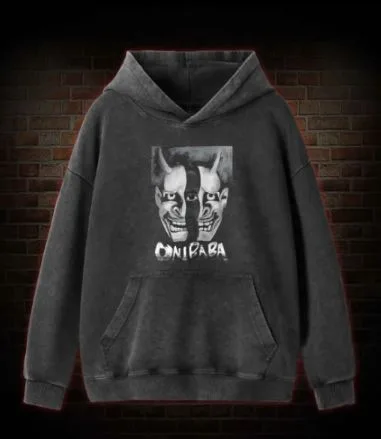Branded Boards: How Corporate Cutting Boards Become Culinary Ambassadors
In an era where branding stretches beyond billboards and business cards, corporate gifts for clients have quietly become powerful tools for storytelling. Far from being mere kitchenware, these branded boards embody a company’s values, create memorable hospitality experiences, and act as tangible ambassadors that travel from corporate events to customers’ homes. This article explores how branded cutting boards bridge food, design, and brand strategy — and why businesses should pay attention.
The tangible power of a branded object
A logo on a mug or pen is one thing; a handcrafted cutting board is another. Because cutting boards are useful, durable, and often proudly displayed, they convert an ephemeral marketing touchpoint into a long-lived piece of functional art. Recipients don’t toss them aside — they use them, display them, and recommend them. That repeated exposure builds familiarity and positive associations with the brand over months and years, which is marketing gold.
Materials that tell a story
Not all cutting boards are equal. The material choice — olive wood, maple, walnut, bamboo, or reclaimed wood — communicates a brand’s priorities immediately. A sustainably sourced bamboo board signals eco-consciousness. A rich walnut board whispers luxury. Reclaimed wood tells a narrative of heritage and responsibility. Careful selection of materials lets brands align the physical product with corporate values: sustainability, quality, craftsmanship, or regional identity.
Design as a brand language
Design decisions on a cutting board extend beyond a simple logo stamp. Size, shape, finish, engraving depth, and edge details all form a visual language. A clean, minimalist board with laser-etched branding suits a modern tech or lifestyle brand. A rustic, hand-finished board with a deeply carved emblem fits artisan food producers or heritage hospitality brands. Smart designers place the logo where it complements rather than competes with the board’s function — for instance, on the handle, the underside, or subtly etched into a corner. Thoughtful design ensures the board remains useful while still telling the brand story.
Practical use: how boards earn their place in the kitchen
Functionality is crucial. If a board is flimsy, awkwardly sized, or difficult to clean, it won’t last — and the brand message dies with it. High-quality boards are heavy enough to be stable, sized for common tasks (cheese service, charcuterie, prep), and finished with safe, food-grade oils. Some brands offer dual-purpose boards (prep surface plus serving tray) or include juice grooves and handles for usability. When the product is genuinely useful, recipients integrate it into everyday life, increasing brand visibility organically.
Hospitality and gifting: creating memorable experiences
Cutting boards shine in hospitality settings: corporate dinners, product launches, media events, and client gifts. Presenting a logoed board during a catered tasting or as a tangible part of a press kit creates a tactile memory tied to the event. For clients, a personalized board inscribed with a thank-you or engraved with a milestone becomes a cherished token — not a disposable swag item. In B2B relationships, such thoughtful gifting signals respect and attention to detail, strengthening business bonds.
Storytelling through customization
Customization is where branded boards become personal ambassadors. Engraving names, dates, or short messages transforms a generic gift into a keepsake. For restaurants and hospitality brands, boards can carry recipes, maps, or local motifs that connect recipients to place and provenance. Limited-edition runs — for a product launch or anniversary — create exclusivity. The more personal and story-rich the customization, the more likely a recipient will display and talk about the board.
Sustainability and ethical messaging
Brands that prioritize sustainability can leverage cutting boards as proof-points. Using FSC-certified wood, reclaimed material, or non-toxic finishes aligns the product with ethical supply chains. Packaging matters, too — recyclable boxes, reusable pouches, or seed-paper inserts amplify the eco-message. When a brand’s physical gift matches its public commitments, it builds trust and reduces cognitive dissonance for conscious consumers.
Social media and earned publicity
A beautifully designed branded board invites photographs. Charcuterie spreads, grilled vegetables, or a simple loaf on a handsome board make for highly shareable social content. When customers post images with a brand’s logoed board, they generate free impressions and authentic endorsements. Brands can encourage this behavior by including a hashtag or a prompt on a care card: “Show us how you use it.” Carefully designed packaging and unboxing experiences further entice users to film or photograph the reveal.
Logistics, cost, and ROI considerations
Investing in branded boards requires balancing cost with the intended impact. A small engraved board is pricier than a branded pen but often produces higher perceived value. Volume discounts, local manufacturing, and choosing a single high-impact gift for top clients (rather than mass-swaggery giveaways) can improve ROI. Brands should also plan packaging, shipping weight, and customs implications for international recipients. When measured against long-term brand impressions and relationship-building value, well-executed boards often justify their expense.
Maintenance, longevity, and brand aftercare
A branded cutting board performs best when it lasts. Providing clear care instructions (hand wash only, oil periodically) on an included card prevents misuse and extends the product life. Some companies offer follow-up touchpoints — like a tip email on board care or recipes to try — to keep the relationship warm. Aftercare is a subtle but powerful way to reinforce the brand as thoughtful and helpful.
Case potential: turning boards into cultural ambassadors
Imagine a hotel chain commissioning cutting boards engraved with maps of the region, local farm names, or chef signatures. Guests take them home — literally bringing a piece of place with them. Or a tech company gifts sleek boards at an employee retreat, creating a shared kitchenware artifact that surfaces in team photos and Slack channels. In these scenarios, the board is no longer just a giveaway; it’s a messenger, carrying brand story into new contexts and communities.
Conclusion: the board as a long-lived handshake
Corporate cutting boards are more than promotional items — they are durable, useful, and emotionally resonant extensions of a brand. When thoughtfully designed, ethically sourced, and carefully presented, they evolve into culinary ambassadors that people keep, use, and share. For brands that want to move beyond disposable swag and create lasting impressions, the cutting board is a simple, elegant, and effective tool: a long-lived handshake that travels from kitchen counter to dining table to social feed, carrying the brand narrative along with it.



